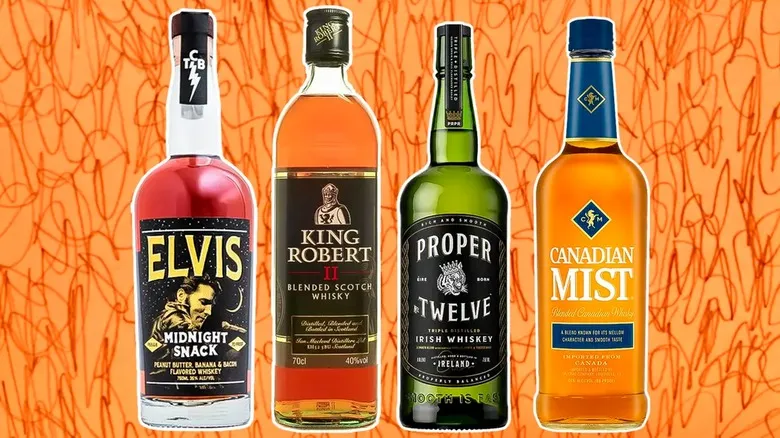Fishky
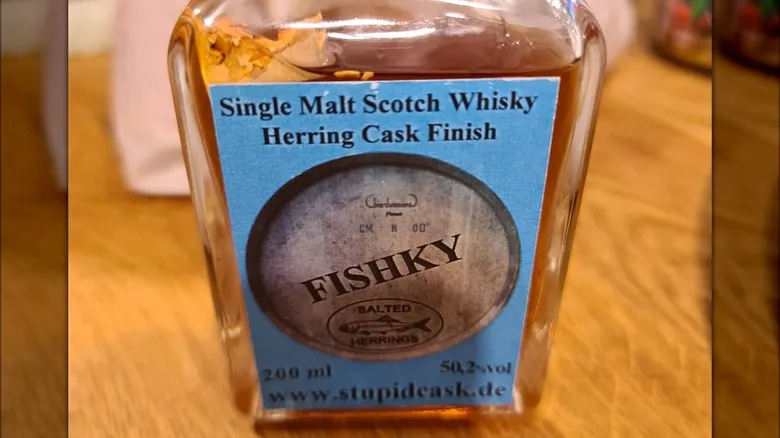
When we contacted Mark Littler, the owner and editor-in-chief of The Whiskey Wash and a contributor to Forbes, we inquired if he had encountered any whiskeys that were undeniably and objectively terrible. He directed us to Fishky, and yes, this is heading exactly where you think it is.
Littler explained that Fishky began its unfortunate journey as a Bruichladdich single cask whisky. "It was later acquired by a German independent bottler aptly named Stupid Cask," he noted. "In a bizarre turn of events, they decided to transfer the whiskey into a cask that had previously contained herring." Does this mean it has a fishy flavor? According to those who have tasted it, the answer is yes: One reviewer on Whiskey Base remarked, "...it is genuinely exhausting. Incredibly salty and slightly bitter, my facial muscles are doing the tango."
If you're curious about what could possibly motivate someone to do this, Littler provided an explanation. He stated, "The goal was to pay tribute to a long-standing rumor that Scottish distillers once aged their whisky in casks that had held fish. Unsurprisingly, the whisky tastes as dreadful as it sounds."
Proper Twelve
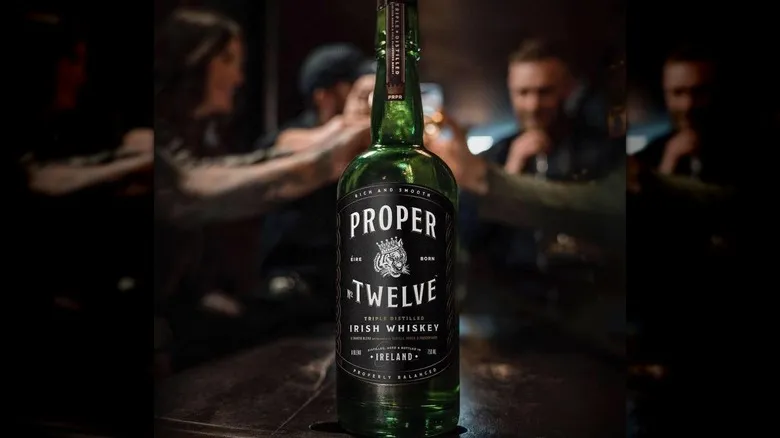
Is Irish whiskey regarded with a higher level of scrutiny? Maybe, but regardless of the criteria, Proper Twelve simply falls short. Should we convey this directly to its creator, MMA fighter and UFC icon Conor McGregor? We'll let you know.
We’re not alone in finding this particular young, blended Irish whiskey—aged for just a few years in ex-sherry casks—difficult to enjoy, especially when compared to the many exceptional Irish whiskeys available (including Costco's intriguingly sourced Kirkland brand). This whiskey somehow manages to be overly bitter, excessively sweet, and lacking in flavor all at once, while also presenting an odd metallic taste that lingers on your teeth.
In a Reddit thread discussing whether it lives up to its negative reputation, one user remarked, "It tastes like someone poured out half a bottle of Windsor, mixed in some rubbing alcohol and simple syrup, and topped it off with cat urine." Another chimed in, "That’s probably the most accurate review. Give that person an award."
Canadian Mist

Let's extend an apology to Canada right now, as this list may not reflect well on you. We'll begin with Canadian Mist.
If you check Distiller, you'll see that the community isn't any more forgiving towards Canadian Mist than we are, currently rating it a disappointing 1.93 out of 5 stars. Reviewers have described its flavor as reminiscent of "peanut shells found on pub floors," "carob and dirt," "leather and cheap cologne," and — in various reviews — ethanol, acetone, rotting garbage, and paint thinner.
It's unfortunate, especially since Statista reports that Canadian Mist ranks among the top four best-selling Canadian whiskies in the United States. This raises the question of how many people were first introduced to whiskey through this and subsequently turned off from trying it again. If you know someone who dislikes whiskey, ask them if Canadian Mist is to blame. If they say yes, treat them to a glass of something truly enjoyable.
Loch Dhu

It's easy to see why distillers want their whiskey to be distinctive, but Mark Littler, the owner and editor-in-chief of The Whiskey Wash, believes Mannochmore may have overstepped with its Loch Dhu 10-year-old. Dubbed The Black Whisky, Littler goes so far as to call it "one of the worst mass-market whiskies ever made."
To achieve its dark hue, Littler explains that the distillery used an excessive amount of a caramel coloring known as E150a. "E150s is a colorless liquid that is meant to enhance the appearance of whiskey, mainly used by blenders seeking uniformity across their products. In small doses, it is thought to have no effect on flavor, but in larger quantities, some contend it can influence both taste and mouthfeel."
The Whiskey Wash's review indicates that one of the few positive aspects of this whiskey is that its finish is short-lived on the palate. With tasting notes that include coffee and "an artificial meaty undertone—almost reminiscent of low-quality gravy granules," a swift conclusion is certainly preferable.
Elvis Midnight Snack
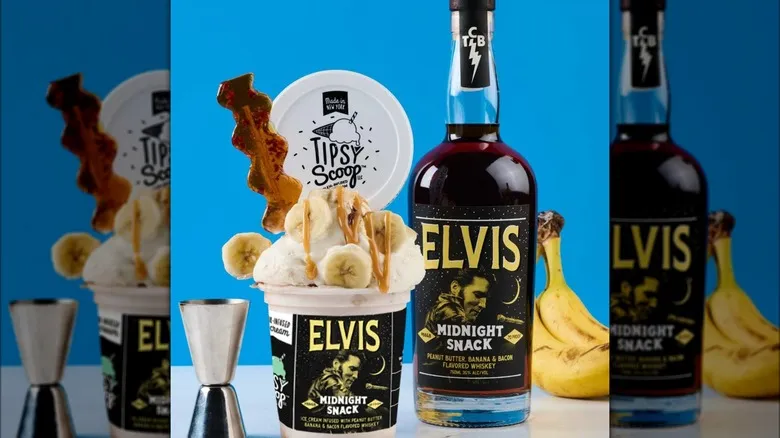
Elvis Presley's distinctive sandwich preferences are widely recognized, particularly one beloved creation that required an entire loaf of bread. Sadly—though some might say fortunately—for Presley, he had passed away long before Elvis Whiskey's Midnight Snack made its debut on store shelves. We mention "perhaps fortunately" because, quite frankly, it's not very good. This whiskey is quite unusual, and one could argue that it strays far from what whiskey is traditionally meant to be. Fans of the drink often describe it as more akin to a sweet liqueur than a whiskey, with its banana flavor reminiscent of Laffy Taffy.
At The Whiskey Wash, this flavored whiskey received a disappointing 3/10 rating from whiskey connoisseur Jeffrey Nitschke. He expressed his desire to enjoy it but ultimately couldn't, describing the taste as a mix of "sweet banana candy, ... a hint of bubblegum ... and overripe bananas [that] linger through the finish."
Bunratty Poteen
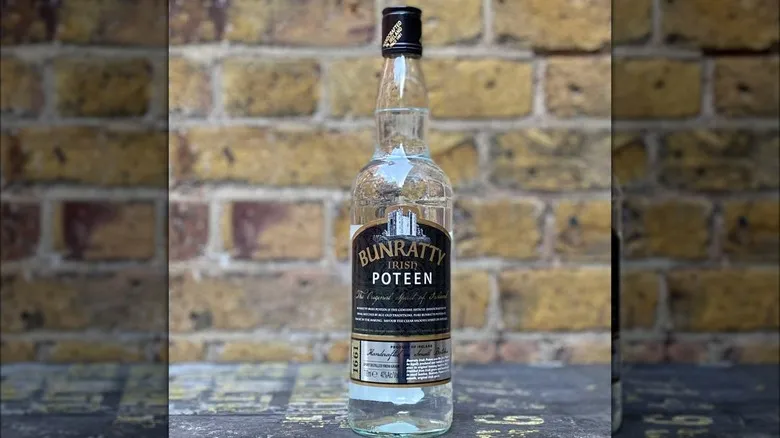
Potcheen — also known as poitin — is the Irish precursor to both whiskey and moonshine. When aged, potcheen transforms into what we now recognize as whiskey, and like moonshine, it was made illegal to distill in Ireland in 1661. Did that deter anyone? Not at all: Potcheen has continued to be widely enjoyed, and it wasn't until 1987 that Bunratty Winery received permission to export Bunratty Poteen (or Potcheen, which became legal for sale in Ireland in 1997, with varying labels). Was this — the first legally-produced potcheen in centuries — a fitting homage to a rich tradition?
Sadly, no. Picture, if you can, sipping on a concoction reminiscent of ethanol-flavored cough syrup, with notes of medicated ointment, black licorice, sugar, and even more sugar added for good measure. This is not the essence of potcheen: True potcheen should possess a warmth and smokiness, along with a crisp, clean finish. Bunratty's Potcheen is perhaps best described by a Reddit user who referred to it as "evil wrapped in a bottle," remarking that consuming it left them questioning "how many brain cells perished as a result."
King Robert II
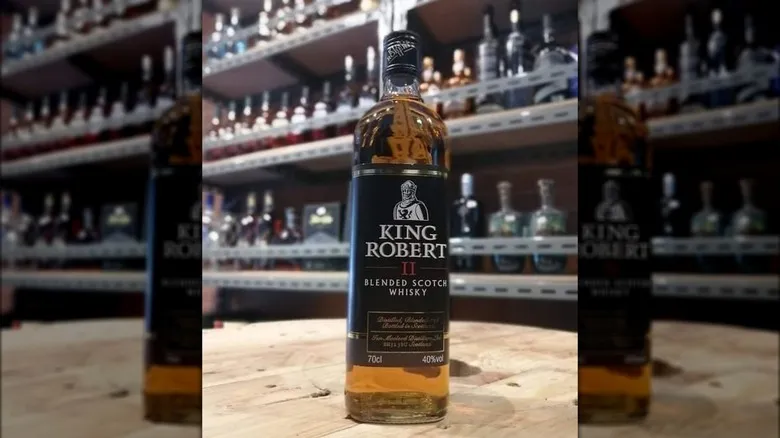
King Robert II is a blended Scotch whisky that fails to exceed the sum of its components. Let's take a look at The Whiskey Wash, which rated the 12-year-old a disappointing 5 out of 10, while the King Robert II Treble Cask Edition fared even worse with a score of just 4. What can you realistically expect from a $14.99 bottle of blended whiskies that lacks an age statement or any distinctive characteristics? If you guessed a flavor profile reminiscent of medicine, iodine, and despair, you would be spot on.
Indeed, this is a budget whisky, and one might argue that you get what you pay for. However, there are plenty of excellent, affordable whiskies available. For instance, if you spend twice the amount on a bottle of Buffalo Trace, you'll find it far more enjoyable.
Reviews for the 12-year-old are consistent, highlighting issues such as a lack of flavor beyond a medicinal burn. Even whisky enthusiasts on Reddit seem perplexed by this offering, which frequently comes up in discussions about whiskies to avoid at all costs. While we could share some of the opinions expressed in various threads, many of the terms used are not appropriate for polite conversation.
Fire Water Whiskey

The only review we could locate for Fire Water Whiskey indicates that it simply isn't good. However, this might be only the secondary reason for its decline; we hope the primary reason is that the whiskey-drinking community collectively decided that naming a whiskey "Fire Water" and featuring a Native American in full regalia is deeply offensive.
We didn't expect discussions about the "worst" whiskeys to delve into issues of racism, yet here we are. For those unfamiliar, the "firewater" myth suggests that Native Americans are genetically predisposed to alcoholism, a notion that emerged after European explorers brought alcohol to the New World.
This often-debunked yet persistently circulated racist ideology has been used to rationalize the numerous atrocities committed against Native Americans, and there should never have been a whiskey named after it. Even if it were exceptionally good, it would still be the worst.
Fujikai 10-year-old

One of the most intriguing remarks we encountered about the Fujikai 10-year-old Japanese whiskey comes from Malt, which noted, "Many peculiar things have occurred in this bottle." The oddity lies in the fact that no one really knows what those peculiarities are, as this limited release of 8,088 bottles was somewhat randomly unearthed in a winery near Mount Fuji. It was bottled and sold, but will you ever have the chance to taste it? Most likely not. Should that bother you? Probably not.
Those who have sampled it describe it as nearly undrinkable, with Top Whiskies stating, "It’s like being held upside down by your school bully while he forces dirt into your mouth." Ouch. Other flavor descriptions are equally unappealing, mentioning notes of diesel, charred wood, coal dust, boiled cabbage, seaweed, astringent mustiness, vegetation, peat, and — oddly enough — apple. So that’s something. Fortunately, there’s a lesson to be learned here: perhaps it’s best to avoid drinking the strange mystery whiskey you stumbled upon in a hole.
Stillhouse
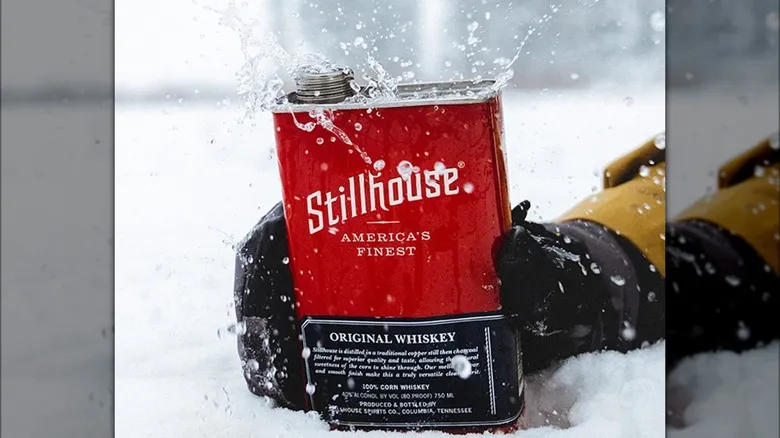
There's much to discuss regarding imagery, and while it's often said that you shouldn't judge a book by its cover, you can certainly judge a whiskey if it comes from a container resembling one for paint thinner. This whiskey claims to be "America's Finest," but if that's true, perhaps America should reconsider its whiskey production altogether. With no aging and a flavor profile limited to corn and ethanol, the comparison to paint thinner is quite fitting (Please, refrain from consuming actual paint thinner).
Overall, it appears that nearly everyone shares our sentiments. Whiskey Sidekick humorously describes it as "a corn dog in a can," which is both amusing and accurate. Just picture sipping on a corn dog, and you’ll understand.
Stillhouse also offers flavored whiskeys, and one could argue that adding flavors only exacerbates the situation. The Whiskey Wash rated Stillhouse's peanut butter s'mores flavor a disappointing 4 out of 10, suggesting it caters to a specific audience—one that enjoys pouring overly sweet, syrupy shots from an oil can.
Lord Calvert
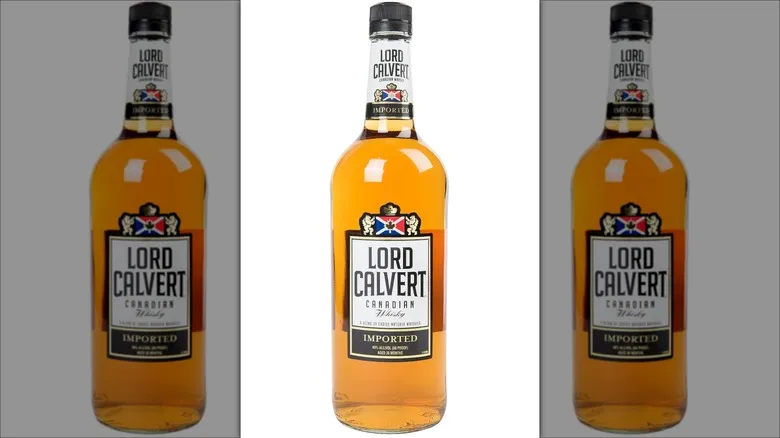
Apologies, Canada, but we’re back to discussing you. If you’re curious about the quality of Lord Calvert, let’s start by noting that Walmart has a 1-liter bottle priced at $10.98. As of now, it’s out of stock, which is probably for the best. While there are some decent budget whiskeys available, this isn’t one of them.
We’d compare it to a spicy rubbing alcohol—though, please, do not consume rubbing alcohol. The folks over at Distiller seem to agree, giving this product a dismal 1.88 out of 5-star rating, which is somewhat inflated by two odd 5-star reviews likely from those who revel in chaos.
Others have noted that it tastes like a mix of alcohol and burning, and Reddit users echo this sentiment—intensely. When we searched for quotes to share with our readers, we had to wade through a sea of expletives before landing on one Redditor who remarked: "There’s no mixer that can dull the harshness. ... Don’t expect a plastic jug of doom from Canada to taste like divine nectar."
Togouchi Japanese Whisky
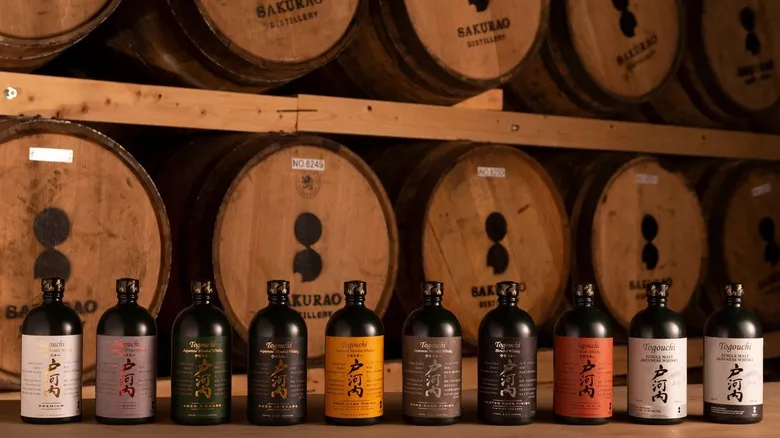
Togouchi Japanese whisky offers a variety of expressions, each accompanied by differing ratings and opinions. Take the Premium Blended Whisky, for instance; it lacks an age statement, yet it is marketed as being aged and blended in Japan, leaving some ambiguity about its origins. Reviews vary widely, with some suggesting it's suitable for mixing, while others find it rather unremarkable.
One point of criticism is that if you purchase a bottle expecting to experience authentic Japanese whisky, that expectation may not be entirely met. While Togouchi is aged and barreled in Japan, the whisky itself is sourced from Scotland and Canada.
Does this qualify it as genuine Japanese whisky? According to the official descriptions, the "Japanese character" is partly derived from the water used to dilute it to the appropriate proof. There is ongoing debate about whether this qualifies as true Japanese whisky, but ultimately, the final product has not garnered a positive reception.
Levant Highlands Black Peak
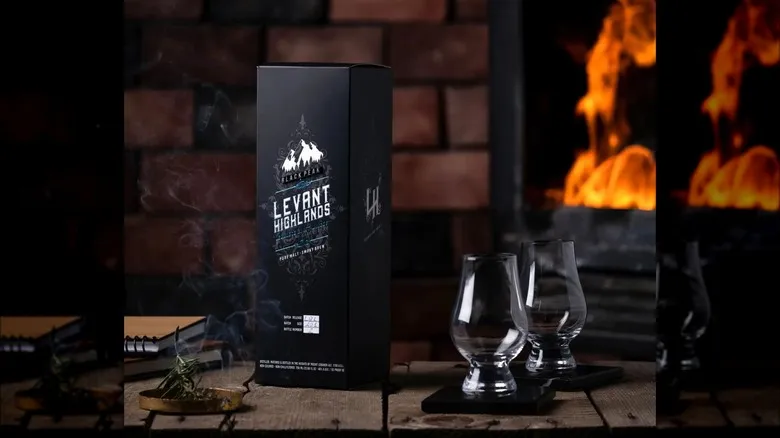
Have you ever found yourself gathered around a campfire, only to be hit with a face full of smoke? If you've ever thought, "I wish I could drink that," then Levant Highlands Black Peak might be just what you're looking for. However, if you’ve experienced the typical coughing and gasping for fresh air that comes with it, you might agree with the folks at Whiskey Base, who rated this whiskey a surprising 13.75 out of 100.
The name is inspired by Lebanon's highest mountain, which is arguably the most intriguing aspect of this whiskey. The intense smokiness is intentional and seems to be a hallmark of Levant Highlands whiskeys. This is achieved by using heavily peated malts and then further smoking the mash with even more peat. Peaty whiskeys can be an acquired taste, but if you've ever wanted to sip on the essence of a campfire, this one might be worth a try... we think.
Jim Beam Red Stag
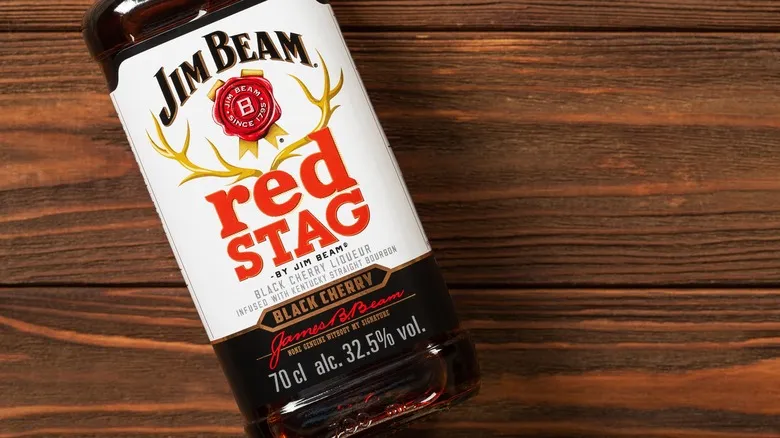
There may be some debate about whether Jim Beam's Red Stag qualifies as whiskey, but we’re inclined to classify it as such. It’s quite possible that someone new to the whiskey scene might choose this as their first bottle, and we recommend that if you see someone doing so, don’t snatch it away from them; instead, gently guide them toward a better option.
Even on Jim Beam's official website, it holds a rating of 3.8 out of 5 stars, with reviews criticizing it for a noticeable formula change that reduced its alcohol content from 40% to 32.5%. Our personal favorite review is simply titled, "No." A frequent complaint about this particular type of whiskey is that it resembles cough syrup more than actual whiskey, with one reviewer stating, "If I wanted cough syrup, I would have bought cough syrup."
While some flavored whiskeys can be improved—like adding vanilla beans to a mediocre whiskey to enhance its drinkability—that's not really the case with Red Stag. Although some might find it acceptable in a well-crafted whiskey sour, the overall texture, flavor, sweetness, and an artificial, medicinal taste lead us to conclude with a resounding "No."
Maple Leaf 8-year-old
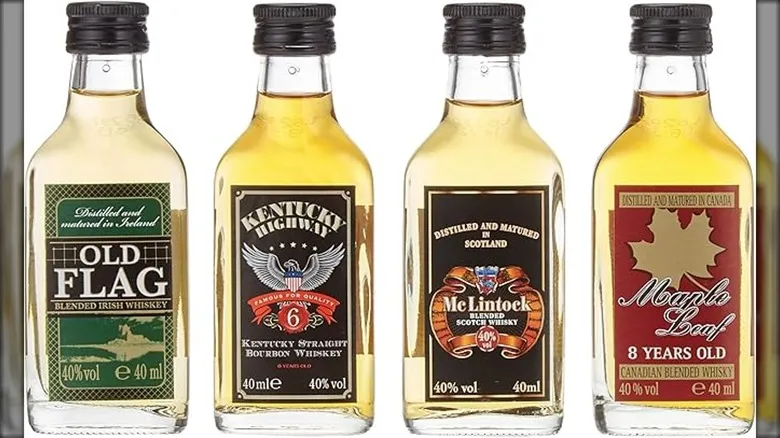
Here's another whisky that we couldn't gather much information about, but based on what we did discover, that might be for the best. We're referring to Maple Leaf 8-year-old, which is indeed Canadian. Interestingly, it appears to have been bottled for the German market and is still available on Amazon Germany as part of a set of 200-milliliter bottles in The World of Whiskey Collection. So, if you're really keen on trying it, you could go ahead. However, you should be aware that it received a disappointing score of 27.46 out of 100 on Whiskey Base.
Reviewers generally had negative things to say about this whisky, describing it as artificial and bitter, and if you can imagine the taste of licking adhesive tape, you're on the right track. There, we've just saved you from ordering Canadian whisky from Germany! While there are only a few ratings for this on Whisky.com, where it received a 1.5 out of 5, it's safe to say that any whisky with notes of oil, medicinal smoke, peat smoke, and alcohol isn't likely to be anyone's favorite... not even in a perfectly crafted New York Sour.
Recommended

The Hands-Down Best Foods To Pair With Tequila
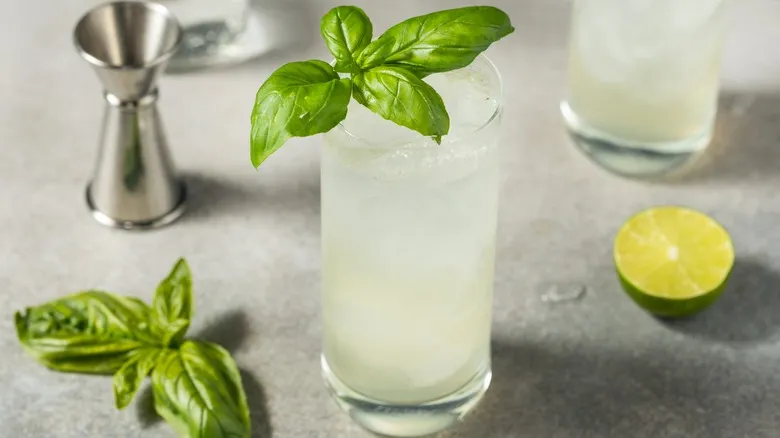
No Mint, No Problem. Try Basil Leaves In Your Next Mojito

Make The Foamiest Cocktails With One Ingredient (No Egg White Needed)
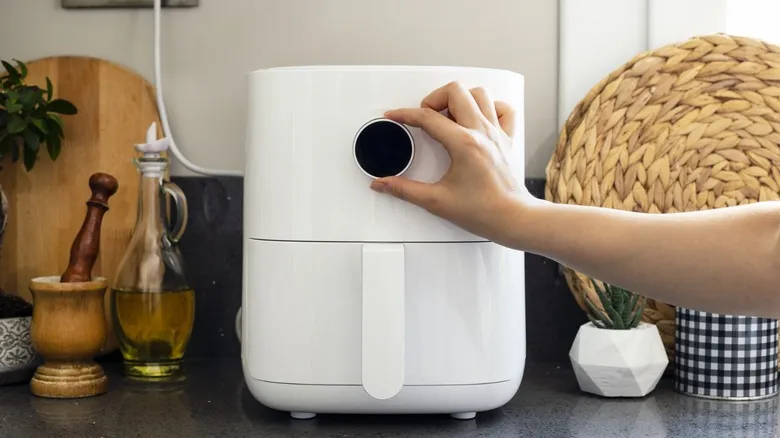
The Air Fryer Hack You Need To Upgrade Cocktail Hour
Next up

